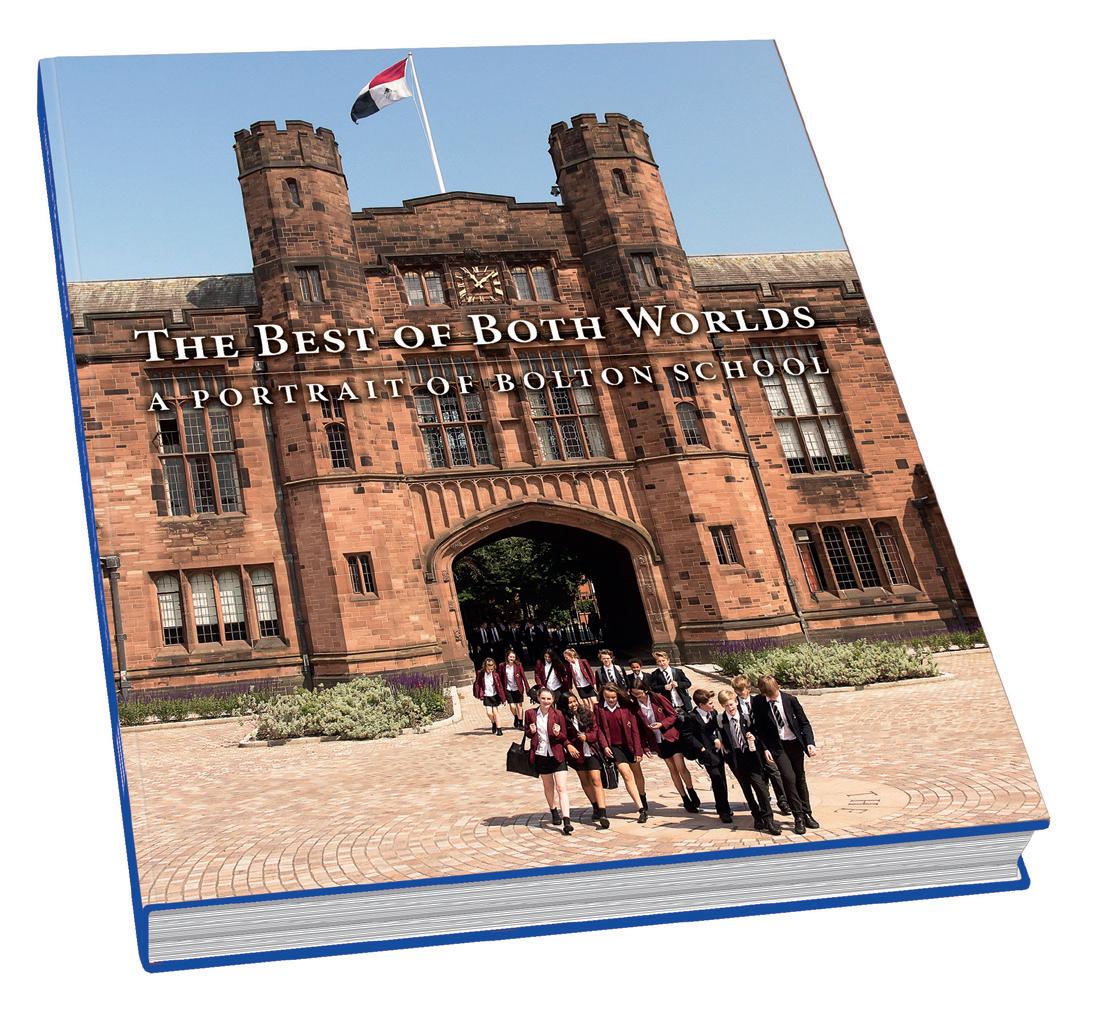
4 minute read
The best of both worlds: A portrait of Bolton School, Stephanie North
The best of both worlds: A portrait of Bolton School
Stephanie North joins in the celebration of Lord Leverhulme’s legacy
One expects a commemorative book to be celebratory, and this book is just that. Bolton School has much to celebrate and this latest example of the beautiful work of Third Millennium Publishing has been produced to commemorate 100 years since the Bolton School Foundation was set up in 1915, endowed by Lord Leverhulme; and to celebrate this remarkable school’s enduring commitment to his founding ethos of equality of opportunity for all.
Enthusiasm for the school shines from all the contributors, spanning the decades and, even though I should declare an interest as an Old Girl, the book will be of interest to people not lucky enough to have gone to school there, charting as it does the impressive consequences for a school of generous endowment, educational vision and pride in its legacy.
The Foundation marked the coming together of two rather unremarkable schools, Bolton Grammar School for Boys and Bolton High School for Girls. Lord Leverhulme had been a governor of the boys’ school, and his philanthropy started in a quiet way, providing bicycle sheds to encourage the boys to cycle to school. He was a remarkably generous man. His legacy includes Port Sunlight, built by him to house and provide amenities, including schools, for his Lever Brothers factory workers.
He also endowed Liverpool University and the Lady Lever Art Gallery. During his time as an MP he introduced a private member’s bill which paved the way for state pensions; he was a supporter of workers’ protection, employment rights and conditions and, perhaps most importantly in the context of the endowment of the school, was an advocate for women’s suffrage.
One has to remember that at the beginning of the 20th century the education of women was limited. A growing momentum in the movement for creating schools for girls can be seen from the 1870s at about the same time as universities began, rather grudgingly, to open their doors to young women. The fact that Lord Leverhulme insisted on an endowment which specified a single Foundation, with two divisions for boys and girls as equal partners, is the more remarkable because of this national context. The founding ethos was his: equality of opportunity for all – and that meant that girls as well as boys should have equal facilities and as wide a curriculum as possible.
He was not a philanthropist who gave gloriously and then walked away: his commitment was total and he supported the
school all his life, doubling his original endowment. Indeed three successive generations of his family have continued this support, the third Viscount Leverhulme going so far as to name his racehorses ‘Girls’ Division’, ‘Boys’ Division’ and ‘Bolton School’. It is not clear from the book whether these animals contributed significantly to the school funds.
The original intention of Lord Leverhulme was to make the school co-educational, having seen this in action in the United States. However, there is a lack of description in the book about the trials of amalgamation, which would have been interesting. There was clearly sustained resistance to the full co-educational step, and as a result the school is in two divisions, for boys and girls, with a bridge between the two equal buildings.
As a wounded veteran of amalgamations, I should have liked to know more about the difficulties the school had overcome, and how they did it. There are hints in the text that all was not rosy at all times: mention of the Lord Lieutenant stepping in for ‘will-shaking’ arouses my curiosity and is in tremendous contrast to the current ‘whole school’ feel that the book describes. This is obviously a celebratory book, but it might have been even more celebratory if a higher profile of the overcoming of difficulties had been in the text.
The Heads’ foreword describes what is currently a very rare school, where the best of both worlds is achieved for the students by having the best possible education in an inspirational setting, single sex education in a co-educational environment, nurturing the love of learning with an ability to take part in character-developing activities.
The divisions have grown closer together over the years and have become a significant resource for each other. A joint governing body underlines this closeness. This drawing together is underlined by the building in 2013 of the Riley centre, which bridges the two divisions with a very dramatic building which is designed both as the school reception area and a sixth form centre where students can learn and relax together, ideally preparing them for university life. In a time when there is constant discussion whether single sex education or co-education is preferable, this school is of great interest and its methods are worth exploring.
One cannot fail to notice in the book’s lavish illustrations that the buildings are of sensational quality. How many schools can one think of where the woodwork and furniture

EXCEPTIONAL PUBLISHING FOR SCHOOLS
If you’re looking to tell your story, promote your brand, celebrate your history or create a beautiful and lasting product that will be treasured for years, our bespoke publishing services are for you.
• Editorial expertise • Award-winning design
• Worldwide distribution • Digital solutions including free eBooks
Contact Alice Crocker: alice.crocker@bloomsbury.com










